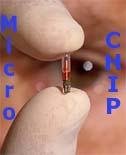Unique locks on microchips could help to reduce hardware piracy
 Washington, March 6 : Computer engineers at the University of Michigan and Rice University have devised unique locks on microchips, which could help to substantially reduce hardware piracy.
Washington, March 6 : Computer engineers at the University of Michigan and Rice University have devised unique locks on microchips, which could help to substantially reduce hardware piracy.
The new technique, called EPIC (Ending Piracy of Integrated Circuits), would use locks on microchips, to head off this costly infringement.
According to the research team, each chip would have its own unique lock and key. The chip would securely communicate with the patent-holder to unlock itself, and it could operate only after being unlocked.
Though EPIC relies on established cryptography methods and introduces subtle changes into the chip design process, it does not affect the chips' performance or power consumption.
Hardware piracy, or making knock-off microchips based on stolen blueprints, is a rapidly increasing problem in the electronics industry.
Integrated circuit piracy has risen in recent years as U. S. companies started outsourcing production of newer chips with ultra-fine features. Transferring chip blueprints to overseas locations opened new doors for bootleggers who have used the chips to make counterfeit MP3 players, cell phones and computers, among other devices.
"Therefore, a growing number of semiconductor companies, have recently announced that they would cease manufacturing chips with finer features, and outsource production to East Asia,” said Farinaz Koushanfar, assistant professor in the Department of Electrical and Computer Engineering at Rice University.
“However, even in U. S. facilities, working chips are sometimes reported defective by individual employees and later sold in gray markets," he added.
With EPIC protection enabled, each integrated circuit would be manufactured with a few extra switches that behave like a combination lock.
Each lock would also have the ability to produce its own at least 64-bit random identification number that could not be changed. The chips would not be manufactured with an ID number, but instead with the tools needed to produce the number during activation.
In the EPIC framework, chips wouldn't work correctly until they were activated. To activate a chip, the manufacturer would plug it in and let it contact the patent owner over an ordinary phone line or Internet connection.
"All chips are produced from the same blueprint, but differentiate themselves when they are turned on for the first time and generate their ID," said Michigan computer engineering doctoral student Jarrod Roy. "Nothing is known about this number before activation," he added.
The chip would transmit its ID securely to the patent owner. The patent owner would record the number, figure out the combination to unlock that particular chip, and respond securely with the key.
The uniqueness of the activation key rules out the possibility that someone could observe it and reuse it without cracking it. (ANI)